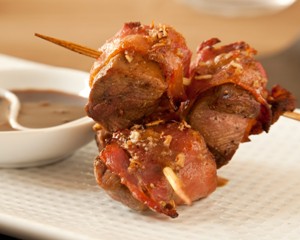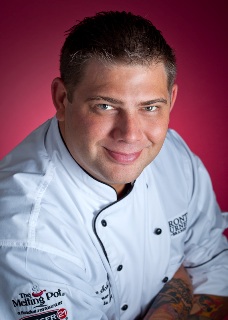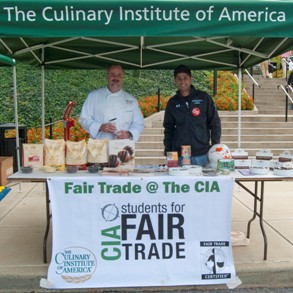Duck, Duck, Win
Tuesday, 11 September 2012 15:43
 A Washburne Culinary Institute instructor wins second prize, and students from Wisconsin and Indiana cook their way to cash awards in the 2012 Discover Duck Chef Recipe Contest.
A Washburne Culinary Institute instructor wins second prize, and students from Wisconsin and Indiana cook their way to cash awards in the 2012 Discover Duck Chef Recipe Contest.
Duck, a natural fit for today’s global cooking culture, was very evident in the 2012 Maple Leaf Farms Chef Recipe Contest. This year’s contest challenged entrants in two categories—professional chef and culinary student—to produce an original small-plate recipe showcasing Maple Leaf Farms duck. More than 250 entries from across the country were submitted in competition for the cash prizes.

 Shane Schaibly doesn’t feel his fondue-specific menu is limiting. So how does the 30-year-old corporate chef of a 140-unit franchise exercise his creativity?
Shane Schaibly doesn’t feel his fondue-specific menu is limiting. So how does the 30-year-old corporate chef of a 140-unit franchise exercise his creativity? There are many ways to deepen relationships with those you already know and broaden and appreciate the range of people you talk to and work with. This fall might just be the time to try them.
There are many ways to deepen relationships with those you already know and broaden and appreciate the range of people you talk to and work with. This fall might just be the time to try them. When are all salts created equal, and when do they have distinct culinary uses? Here’s a primer on teaching the qualities and characteristics of the world’s most common seasoning.
When are all salts created equal, and when do they have distinct culinary uses? Here’s a primer on teaching the qualities and characteristics of the world’s most common seasoning. The Culinary Institute of America now serves only Fair Trade coffee at its Hyde Park campus. Why?
The Culinary Institute of America now serves only Fair Trade coffee at its Hyde Park campus. Why?